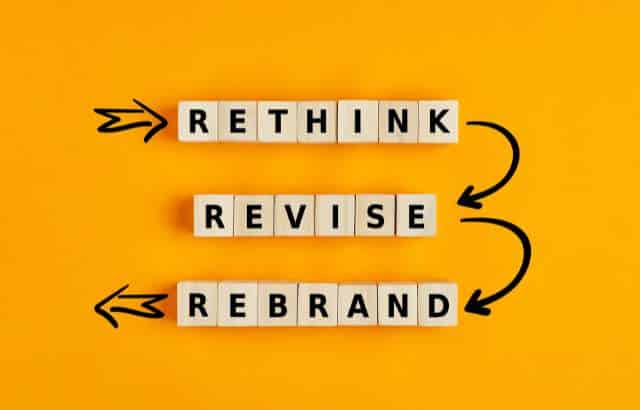Rebranding is a powerful tool that can transform a company’s image, boost its market presence, and breathe new life into a brand. When executed correctly, it can indeed work wonders for a business. However, rebranding can also be a double-edged sword, and sometimes it goes terribly wrong. In this blog, we will explore the potential benefits of rebranding and examine a few notable failed rebranding examples to understand the importance of getting it right.
Table of Contents
The Power of Rebranding

Rebranding, when done right, can deliver several advantages to a company:
- Refreshing Your Image: Over time, a brand may become stale or outdated. Rebranding allows you to refresh your image, making it more appealing to both existing and potential customers.
- Adapting to Market Changes: Markets evolve, and consumer preferences shift. A well-planned rebranding strategy can help a company adapt to these changes and stay relevant.
- Differentiation: Rebranding can help you stand out in a crowded marketplace. It allows you to communicate what sets you apart from competitors.
- Increased Trust: A successful rebrand can enhance trust and credibility. It signals that the company is proactive and committed to growth.
Failed Rebranding Examples

While rebranding can indeed work wonders, several high-profile cases serve as cautionary tales about what happens when it goes wrong:
- Gap’s Logo Redesign (2010): In an attempt to modernize its image, Gap unveiled a new logo that was met with a public backlash. Customers were attached to the old logo, and the new design was widely criticized. Gap quickly reverted to its original logo.
- New Coke (1985): Coca-Cola’s attempt to change its iconic formula resulted in one of the most famous product failures in history. Consumers’ strong emotional attachment to the original taste led to protests, and “New Coke” was eventually pulled from the market.
- Tropicana Packaging Redesign (2009): Tropicana’s radical packaging redesign led to a 20% drop in sales in just two months. The new design confused customers, and they struggled to find their favorite products on store shelves. Tropicana swiftly reverted to the old packaging.
- PepsiCo’s Tropicana Acquisition (1998): While not a traditional rebranding, PepsiCo’s acquisition of Tropicana was a colossal failure. The company’s focus on efficiency and cost-cutting resulted in a decline in product quality and customer loyalty.
The Phenomenon of Rebranding – Lessons to Learn

These failed rebranding examples teach us several valuable lessons:
- Know Your Audience: Understanding your customers and their emotional attachment to your brand is crucial. Ignoring this can lead to disastrous outcomes.
- Gradual Change is Safer: Radical changes can be risky. It’s often better to evolve your brand gradually rather than making abrupt, shocking alterations.
- Listen to Feedback: When customers express their opinions, it’s essential to listen. The sooner you address their concerns, the better.
- Stay True to Your Brand: Rebranding should enhance, not erode, your core brand identity. Don’t lose sight of what makes your brand unique.
FAQs on the Phenomenon of Rebranding

1. What is rebranding?
Rebranding is the process of changing the corporate image, identity, and overall strategy of a company. It often involves updating the company’s name, logo, design, marketing materials, and sometimes the core business model to refresh its market position or appeal to a new audience.
2. Why do companies rebrand?
Companies rebrand for various reasons, including:
- To differentiate themselves from competitors
- To refresh their image and attract a new customer base
- To align with changing market trends or consumer preferences
- To overcome a negative reputation or image
- To reflect a shift in the company’s vision, values, or product offering
3. How do you know if your business needs rebranding?
Signs that your business might need rebranding include:
- Declining sales or engagement
- Outdated or irrelevant brand image
- A shift in target audience or market
- Negative associations with your current brand
- A new business direction or product offering
4. How long does the rebranding process take?
The rebranding process can vary depending on the complexity of the changes. It can take anywhere from a few weeks to several months. A thorough rebranding strategy involves market research, creative design, stakeholder input, and implementation.
5. How much does rebranding cost?
Rebranding costs can range from a few thousand dollars for small changes (like a new logo) to millions for a comprehensive overhaul involving a full identity change, marketing campaigns, and product repositioning. The cost depends on the scope and scale of the rebranding efforts.
6. Can rebranding negatively affect a company?
Yes, rebranding can have risks, such as alienating existing customers, confusing the market, or failing to resonate with the new audience. It’s essential to have a well-thought-out strategy, clear communication, and gradual implementation to mitigate potential backlash.
7. What are some successful rebranding examples?
Successful rebranding examples include:
- Apple: Evolving from a niche computer company to a global tech leader with a sleek, minimalist identity.
- Nike: Shifting from a sports shoe brand to a global symbol of empowerment and athleticism.
- Old Spice: Transforming its image from a dated product to a fresh, modern brand appealing to younger consumers.
8. How do you measure the success of a rebrand?
Success can be measured through:
- Increased brand awareness and customer engagement
- Sales growth or market share improvement
- Positive feedback from customers and employees
- Improved brand perception in the market
- Alignment of the new brand with business objectives and customer needs
9. Should small businesses consider rebranding?
Yes, small businesses can benefit from rebranding if they are evolving, targeting a new audience, or updating their business strategy. A strategic rebrand can help small businesses stand out in a competitive market and appeal to modern customers. However, it’s important to ensure the rebranding aligns with the overall business goals and market needs.
Conclusion

Rebranding, when executed effectively, can indeed work wonders for a company. However, it’s a strategy that should be approached with caution, as misguided attempts can have significant negative consequences. The lessons from the failed rebranding examples remind us that rebranding is a delicate balancing act between evolution and preservation. When in doubt, it’s better to tread carefully and ensure that your brand’s essence remains intact while adapting to changing times.










